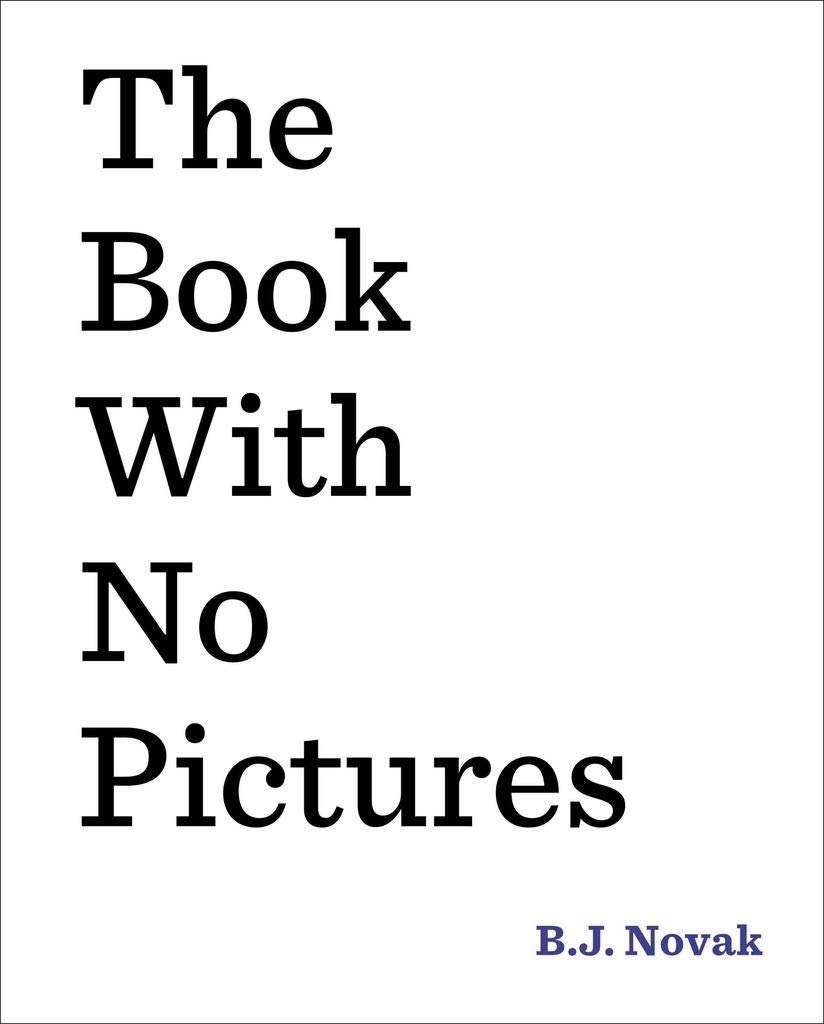This month's Book Nook topic is...
Building Print Knowledge with The Book with No Pictures

Print knowledge is a key early literacy skill that helps set your child on the path to reading and writing success. There are a lot of things your child needs to understand about print (for example, that letters combine to make words and that we read print from left to right), but the very first thing your child must understand about print is that it has meaning. He needs to learn that print is more than strange squiggly lines on a page – it represents spoken language and tells a story.
Here are some simple tips for showing your child that print has meaning.
Let’s get started!
The Book:
The Book with No Pictures by B.J. Novak
Why we picked it
The book is very silly and entertaining for preschoolers as everything written on the page has to be said by the person reading it aloud – including ridiculous non-words like BLORK and BLURF!
As the title implies, there are absolutely no illustrations in this book, meaning that the print does all the talking! The words on each page are presented in many different eye-catching ways. On some pages, the font is small and surrounded by lots of empty white space. Other pages contain large, colourful print and bold letters that create many opportunities to talk about print.
POP to build print knowledge
A key strategy you can use to show your child that print has meaning is POP or Point Out Print. Often children ignore print and just look at the illustrations. This is impossible to do with a book like The Book with No Pictures! When you make an effort to point out the print, you give your child opportunities to think and talk about the print they see, and to recognize that it has meaning.
You might POP by pointing to the words, making comments and asking questions about the print, or you can use your finger to track the words you are reading. When you do this, you’re letting your child know that what you’re saying aloud comes from the words on the page, and that those words are communicating meaning.
The first time you read the book
The first time you read the book, track the words with your finger as you say them to help your child connect what you are saying with the symbols on the page. You might also make a comment like, “Look, I’m reading these words. These words are telling me all of the silly things I’m saying!”
The second time you read the book
This time, you can try pausing more often as you read to Point Out Print. Continue to track words with your finger, only this time, make a comment about something that you read. For example, on the page that says, “Also, I am a ROBOT MONKEY” the font used for “ROBOT MONKEY” is pixelated. You could Point Out Print by saying, “Look at the letters in this word. It says, ‘ROBOT MONKEY’ and is telling me to read in a robot voice!” You can make similar comments while reading other words based on their size – talk about large print and suggest reading it loudly. Point to small print and say, “Look how small these words are written. Do you think I should read them loudly or quietly?”
By bringing print to your child’s attention and talking about the features of words, you are teaching your child that the words on the page have meaning – an essential skill for future reading and writing!
Happy reading!
More Resources
The strategies in this Book Nook post are drawn from Hanen’s practical, research-based guidebooks for building emergent literacy. Explore the links below to learn more about how these guidebooks can support you.
For Parents I'm Ready! guidebook
I'm Ready! guidebook
For Educators ABC and Beyond guidebook
ABC and Beyond guidebook
